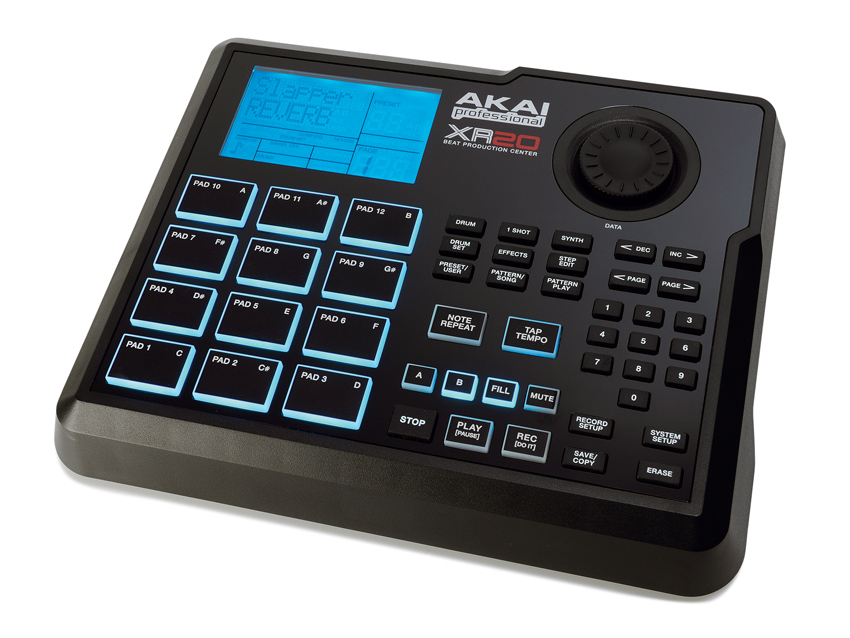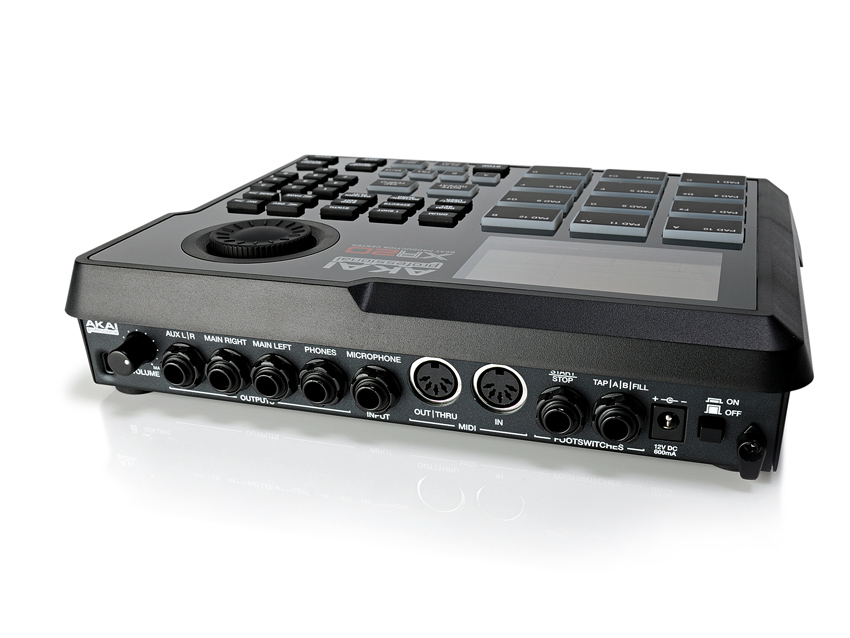MusicRadar Verdict
A great sounding and inspiring drum machine, but it does have a few limitations.
Pros
- +
Compact, lightweight and battery-powerable. Simple to set up and use. Sounds and feels great.
Cons
- -
No USB port. Can't change the sounds. Quantise has to be set before recording.
MusicRadar's got your back

Akai XR20

Akai XR20
The XR20 is an intriguing product. With laptop- and software-driven beat production now massively popular, it's brave of Akai to release a preloaded and sampler-free drum machine without USB.
Make no mistake though - this is a drum machine in the traditional sense. Concept-wise, it reminds us of units such as the Alesis SR16, Cheetah MD-16 and Yamaha RY20 from back in the day, and first impressions are pretty favourable.
Overview
Build-wise, the XR20 feels solid and looks good for this price point. The design is good, and the unit shares the current Akai family look. The pads feel properly MPC-like although, sometimes, you need to give them a good bash to get the maximum velocity. It's a shame that only eight levels of velocity are available via the pads - full-scale velocity is only possible over MIDI.
One thing that always annoyed us about making beats on Akai MPCs in particular was that sometimes, it was extremely difficult to remember which pad made a particular sound within a beat you'd just recorded (especially if you were trying to erase a drum hit).
With the XR20, it's easy to find the sound that's playing, as each pad lights up blue in exactly the position it's played within a sequence. Now if only they'd filter this feature over to the MPC range!
The display is very clear and large and uses a bright blue backlight that should ensure it can be read in all light conditions. The size of the screen also means that names of sounds and beats are always displayed in full rather than cryptically abbreviated, as happens on some smaller displays. It really helps to make workflow quick and easy, even for the drum machine novice.
To the lower-right of the pads are the Stop, Play and Record buttons and new Part A, B, Fill and Mute buttons. It's nice to see the legendary Note Repeat button included, too; this enables you to play (for example) 16th hi-hat patterns or rolls by just holding down a pad and the note repeat button at the same time. The value of the note repeat is set by the quantise value set in 'Record Setup' mode.
Next up is the Tap Tempo button that does what it says on the tin. If you hold this down and move the data wheel, you can set the tempo with a finer resolution. The tempo is continuously displayed in the bottom-right of the screen.
The mode buttons are the heart of the XR20 and enable direct access to the various types of sounds and patterns and the Pattern Play and Step Edit modes. There are 100 preset/user writeable patterns onboard and 100 writeable songs.
Sounds
The onboard sounds were made by Chronic Music which has produced some great urban libraries in the past. These are tough and punchy, broad in scope, high-quality and very useable (which is a good job as you're stuck with them).
Everything you need is here: from dirty 808 kicks, hats and claps to more live sounding kits and one-shot effects (noises, sound effects, scratches, vocal hits and more). There are over 700 individual sounds in total, which is plenty to keep most programmers occupied for a long time. Our only complaint sound-wise is that there's a fair bit of background hiss on the outputs.
There's also a synth section that contains 63 instrument and synth samples that can be played polyphonically via the pads. The general character here is grimey and noisy, with these samples almost sounding like they were captured at 8- or 12-bit resolution!
These tones work well in an urban context and enable full song backings to be built exclusively in the XR20. It's fun playing the synth sounds via the pads, rather than with a keyboard (though you can trigger them via a MIDI keyboard if you so desire) and it's easy to come out with completely different types of chords and bass lines due to the restrictions that the pads impose. In fact, working in this slightly odd way can feel very inspiring.
Editing and effects
If you feel that the preset sounds aren't quite doing it for you, you can get stuck into the simple but useful editing tools by stepping through the Edit pages using the Page buttons.
You can edit pad volume/velocity, select the main or aux outputs and adjust the tuning, envelopes and filter. These controls all work well and, although the low-pass filter is very basic in operation and has no resonance control, it's pretty useful nonetheless.
Effects-wise, there are 23 reverb presets ranging from springs to gates to rooms and more and these again are very well chosen yet a little grungy sounding - in a good way! It's nice that each pad/sound can have its own send amount, so you could have your hats dry and snare with reverb within a kit.
There is also a great master EQ/ compressor with 14 presets. This sounds fantastic and helps to add that final polish to your beats.
Summary
Generally, this is a great little drum machine but there are some limitations.
The major downside is that there is no way to change the sample set, add user samples or update the operating system (unless there are future plans to enable this to happen over MIDI) so the XR20 is slightly stunted at the moment, but who knows what Akai might have up its sleeves in this regard.
Surely though, it wouldn't have cost too much to include a USB socket or card reader and one or other of these additions would have broadened the XR20's appeal dramatically. Also, there is no onboard sampling, though this is probably because Akai doesn't want to cannibalise its MPC range.
Another annoying downside is that quantise can't be set after your beat has been recorded - it has to be set before your recording. This can be frustrating when you want to edit it after.
Finally, we would have liked to see an effects bypass button, a return to main window button (it's sometimes a few too many button presses back to the main screen) and the headphone socket mounted on the front.
All in all though, this is a great and inspiring box and because of its simplicity (and limitations) we've found ourselves making very different beats to those we'd make with our DAWs.
The XR20 is easy to use, sounds great and would is equally at home on stage or in the studio.
Have a listen to what the XR20 is capable of:
MusicRadar is the number one website for music-makers of all kinds, be they guitarists, drummers, keyboard players, DJs or producers...
- GEAR: We help musicians find the best gear with top-ranking gear round-ups and high-quality, authoritative reviews by a wide team of highly experienced experts.
- TIPS: We also provide tuition, from bite-sized tips to advanced work-outs and guidance from recognised musicians and stars.
- STARS: We talk to musicians and stars about their creative processes, and the nuts and bolts of their gear and technique. We give fans an insight into the craft of music-making that no other music website can.
"This is the amp that defined what electric guitar sounds like": Universal Audio releases its UAFX Woodrow '55 pedal as a plugin, putting an "American classic" in your DAW
"Yamaha has achieved an extraordinary level of immersiveness and realism, crafting an instrument that sounds closer to an acoustic piano and feels like one under your fingers": Yamaha Clavinova CLP-885 digital piano review
With its latest free update, Ableton has finally turned Note into the app I always wanted it to be










